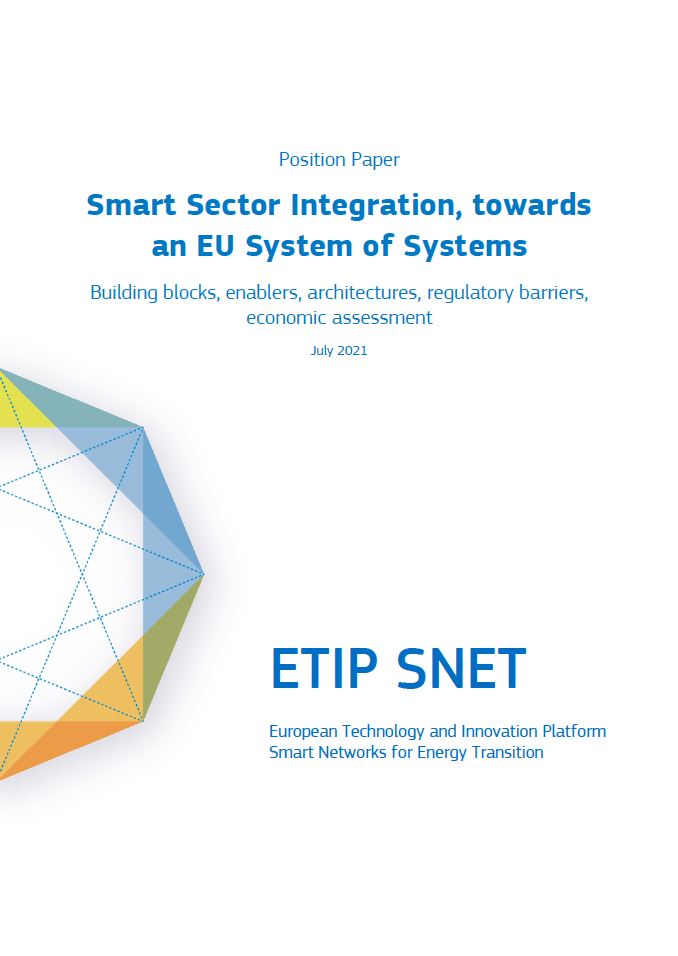
The ETIP SNET Working Group 1 on Reliable, economic and efficient smart grid system release a new position paper on Smart Sector Integration, towards EU System of Systems
The European Commission set ambitious goals to “achieve decarbonisation at the lowest possible cost” and published on the 8th July 2020 “An EU Strategy for Energy System Integration” (European Commission, 2020e). The “smart integration of renewables, energy efficiency and other sustainable solutions across sectors” such as heating and cooling, transport, gas, industry and agricultural sectors are expected to bring renewable energy production, infrastructures and demand-side closer while this transition towards phasing out of fossil fuels, decarbonisation of economy enabled by smart integration is anticipated to create economic opportunities along with reaching climate neutrality by 2050.
This paper develops further the concepts introduced in the ETIP SNET WG1 preceding White Paper “Sector Coupling: Concepts, State-of-the-art and Perspectives (ETIP SNET, 2020) and focuses on complementary areas forming a holistic approach. Regulatory barriers, research and innovation needs, complimentary building blocks considerations such as ICT architectures, the related tools, the enabling use cases and solutions are introduced with the aim of facilitating the scale-up relying on a system of systems approach leading towards faster market uptake and integration. The goal is to anticipate, advance and drive the process instead of considering the topics after the issues are identified as challenges, barriers or roadblocks.
The Smart Sector Integration considerations to address Vision 2050 of ETIP SNET stretch well beyond advanced technologies. The concepts introduced in this paper are building on the Working Group 1 mission related to “Reliable, economic and efficient smart grid” that can integrate all energy vectors through a holistic approach addressing the need for a “more circular energy system, with ‘energy-efficiency-first’ at its core” while “accelerating the electrification of energy demand, building on a largely renewables-based power system”. In addition, the need for promoting “renewable and low-carbon fuels, including hydrogen, for hard-to-decarbonise sectors” (European Commission, 2020e) while aiming at more integrated energy infrastructures and digitalised energy systems supported by innovation networks are introduced.
There are many mission-critical components to Sector integration beyond technological conversions introduced in the chapters of the paper from the conceptual frameworks to ICT enablers and facilitators to the regulatory challenges and possible ways forward. Specifically, the impact criteria and the use cases template for Sector Coupling along with the reference use cases are introduced.
The conclusions and the recommendations of the paper aim at facilitating the implementation process while offering a number of policy recommendations as well as a format progress monitoring.
The Working Group intends to continue working in the direction from “what to how” in the Sector integration framework and focus on the follow-up topics in 2021.
< Back to all entries
